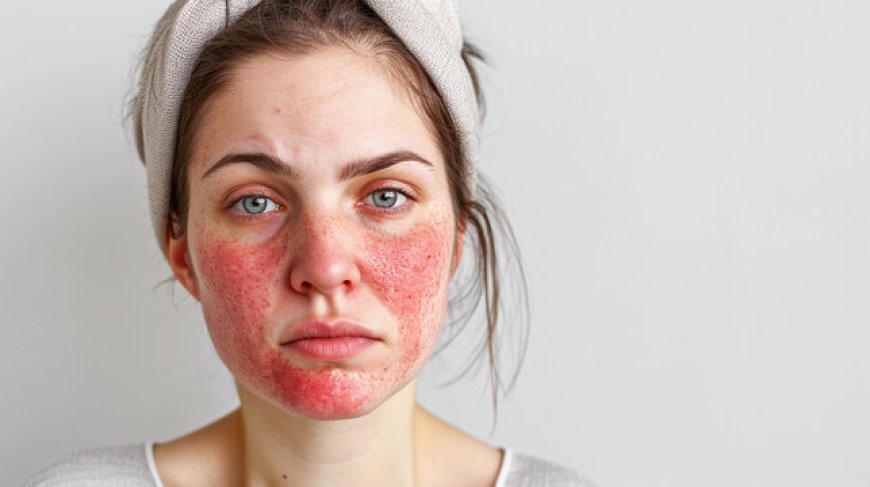Rosacea Treatment: Medications and Procedures

Rosacea is a common yet often misunderstood skin condition characterized by facial redness, visible blood vessels, and sometimes acne-like breakouts. While it can affect anyone, it is most prevalent among fair-skinned individuals and women in their 30s and 40s. Although the exact cause of rosacea remains unclear, it is believed to be linked to genetic factors, environmental triggers, and an overactive immune response. Fortunately, various medications and procedures can help manage and alleviate the symptoms of Rosacea Treatment in Dubai, allowing individuals to regain their confidence and improve their quality of life.
Understanding Rosacea
Rosacea can manifest in different ways, with symptoms that may include:
- Persistent facial redness
- Flushing and blushing
- Visible blood vessels
- Bumps and pimples
- Thickened skin, especially on the nose (rhinophyma)
- Eye irritation (ocular rosacea)
Recognizing the signs and seeking timely treatment is crucial, as untreated rosacea can lead to worsening symptoms and complications, including psychological effects like anxiety and low self-esteem.
Medications for Rosacea
When it comes to treating rosacea, medications can play a significant role. Several options are available, each designed to target specific symptoms and underlying causes.
1. Topical Medications
Topical treatments are often the first line of defense against rosacea. These include:
-
Metronidazole: This antibiotic gel or cream helps reduce inflammation and redness. It is usually applied once or twice daily and is effective for many individuals.
-
Azelaic Acid: This is another topical treatment that helps reduce inflammation, unclog pores, and prevent the formation of papules and pustules. It can also improve skin texture and tone.
-
Ivermectin: Available in a cream formulation, ivermectin is known for its anti-inflammatory properties and is effective in treating papules and pustules associated with rosacea.
-
Brimonidine: This topical gel works by constricting blood vessels, leading to a temporary reduction in redness. It can provide relief for several hours and is often used for persistent flushing.
2. Oral Medications
For moderate to severe rosacea, oral medications may be necessary. These can include:
-
Antibiotics: Oral antibiotics like doxycycline or tetracycline can help reduce inflammation and treat acne-like breakouts. They are usually prescribed for several weeks to months, depending on the severity of symptoms.
-
Isotretinoin: In severe cases of rosacea, isotretinoin, a powerful oral retinoid, may be prescribed. This medication is effective in reducing oil production and preventing the formation of acne lesions.
-
Hormonal Therapies: For women experiencing rosacea flare-ups linked to hormonal changes, such as those related to menopause, hormonal treatments may help stabilize symptoms.
Procedures for Rosacea
In addition to medications, various procedures can enhance treatment outcomes for rosacea. These interventions can provide immediate relief from symptoms and improve skin appearance over time.
1. Laser Therapy
Laser treatments have gained popularity for managing rosacea, particularly for reducing redness and visible blood vessels. The following types of lasers are commonly used:
-
Pulsed Dye Laser (PDL): This laser targets blood vessels, effectively reducing redness and flushing. It is known for its precision and minimal side effects.
-
KTP Laser: This laser also targets blood vessels but is particularly effective for treating small veins and redness. Patients often see significant improvement after just a few sessions.
-
Fractional Laser: While primarily used for skin resurfacing, fractional lasers can also improve the overall appearance of rosacea-affected skin by promoting collagen production and reducing redness.
2. Intense Pulsed Light (IPL)
IPL therapy uses broad-spectrum light to target the blood vessels and pigmentation associated with rosacea. It can effectively reduce redness, improve skin texture, and minimize flushing. Multiple sessions are typically required for optimal results, and patients may experience mild redness and swelling afterward, similar to a sunburn.
3. Electrosurgery
Electrosurgery is a procedure that uses high-frequency electrical currents to treat visible blood vessels. It is particularly effective for small, stubborn veins that do not respond to laser treatments. The procedure is minimally invasive, and recovery is usually quick.
Lifestyle and Home Remedies
While medications and procedures are essential for managing rosacea, certain lifestyle changes and home remedies can help alleviate symptoms and prevent flare-ups.
-
Identify Triggers: Keeping a diary to track potential triggers—such as certain foods, beverages, weather conditions, or skincare products—can help individuals avoid factors that exacerbate their symptoms.
-
Gentle Skincare: Using gentle, fragrance-free skincare products is crucial for rosacea-prone skin. Harsh cleansers and exfoliants can irritate the skin and worsen symptoms.
-
Sun Protection: Daily use of a broad-spectrum sunscreen with an SPF of at least 30 can protect the skin from harmful UV rays, which can trigger rosacea flare-ups.
-
Stress Management: Stress is a known trigger for rosacea. Practicing relaxation techniques, such as yoga, meditation, or deep breathing exercises, can help reduce stress levels.
Conclusion
Rosacea is a complex skin condition that requires a tailored approach to treatment. With a combination of medications, procedures, and lifestyle adjustments, individuals can effectively manage their symptoms and enjoy clearer, healthier skin. Consulting with a dermatologist is essential for developing a personalized treatment plan and ensuring the best possible outcome. Early intervention and proactive management are key to living well with rosacea and restoring confidence in one's appearance.
